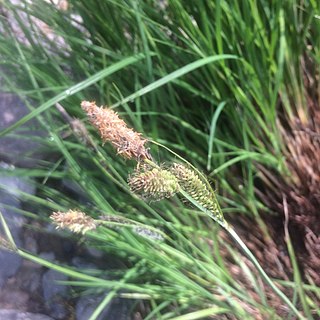
Carex nudata is a species of true sedge known by several common names, including torrent sedge, California black-flowering sedge, Dudley's sedge, and naked sedge.

Carex pendula is a large sedge of the genus Carex. It occurs in woodland, scrubland, hedges and beside streams, preferring damp, heavy clay soils. It is sometimes grown as a garden plant because of its distinctive appearance.
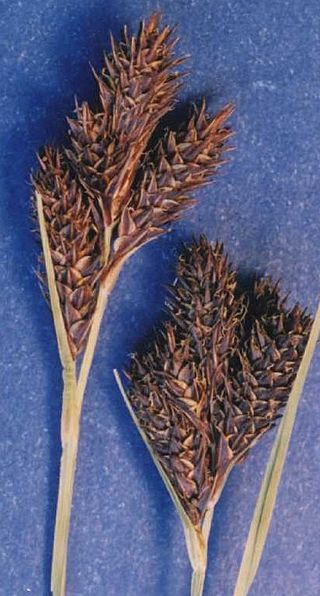
Carex helleri is a species of sedge known by the common name Heller's sedge. It is native to eastern California and western Nevada, where it grows on rocky mountain slopes and in other habitats.

Carex hoodii is a species of sedge known by the common name Hood's sedge. It is native to western North America from Alaska to Nunavut to California to South Dakota, where it grows in dry to moist habitat in forests and on mountain slopes.
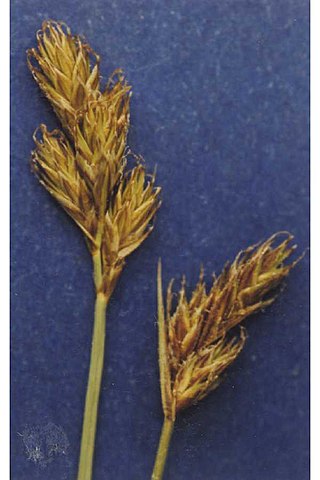
Carex leporinella is a species of sedge known by the common name Sierra hare sedge.
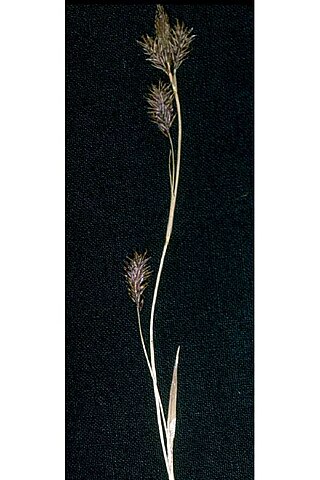
Carex luzulina is a species of sedge known by the common name woodrush sedge.
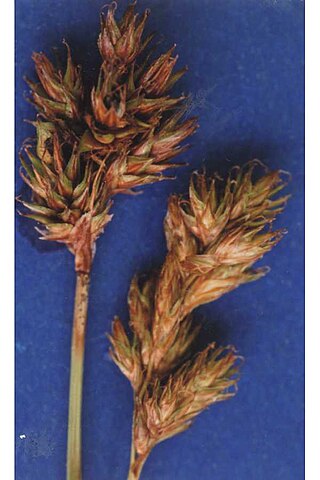
Carex multicostata is a species of sedge known by the common name manyrib sedge.
Carex petasata is a species of sedge known by the common name Liddon sedge.

Carex phaeocephala is a species of sedge known by the common name dunhead sedge.
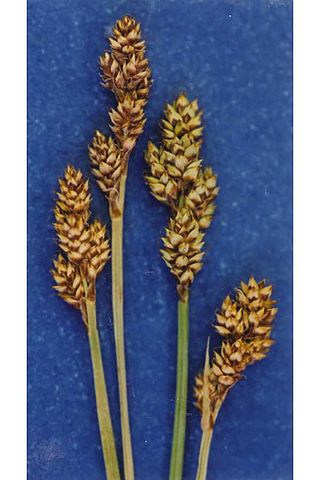
Carex praeceptorum is a species of sedge known by the common names early sedge and teacher's sedge.

Carex praegracilis is a species of North American sedge known as clustered field sedge, field sedge, and expressway sedge. Carex praegracilis is cultivated in the specialty horticulture trade as lawn substitute and meadow-like plantings.
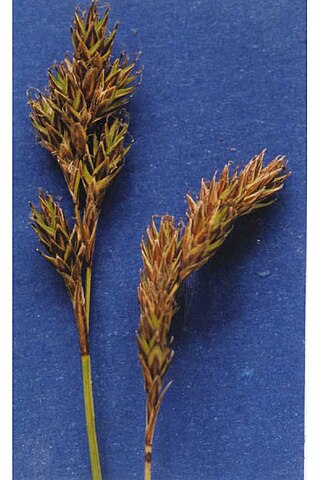
Carex praticola is a species of sedge known by the common name meadow sedge. It is native to most of northern North America, including most of Canada and the northernmost United States. It grows in many habitat types from wet to dry, including moist mountain meadows and woodlands. This sedge produces dense clumps of stems approaching a meter in maximum height. The inflorescence is an erect or nodding cluster of several flower spikes in color light greenish or brown to white. The fruit is covered in a perigynium which is white to cream, sometimes with a coppery center, and translucent.

Carex proposita is a species of sedge known by the common name Great Smoky Mountain sedge. It has a scattered distribution in parts of the western United States, including Washington, Idaho, and California. It was named for the Smoky Mountains of Idaho, not the Great Smoky Mountains, where it does not occur. This sedge produces low, dense clumps of stems under 35 centimeters tall. The inflorescence is a dense or open bundle of rounded or oval brown flower spikes. The fruit is coated in a veined perigynium with a white tip.

Carex rossii, commonly known as Ross's sedge, is a hardy species of sedge that is often a pioneer species in areas with little or no established vegetation, or in places where disturbance has occurred. Ross's sedge grows in a variety of habitats throughout much of western North America, from Alaska to Ontario, south to New Mexico and California. It flowers in May and June.
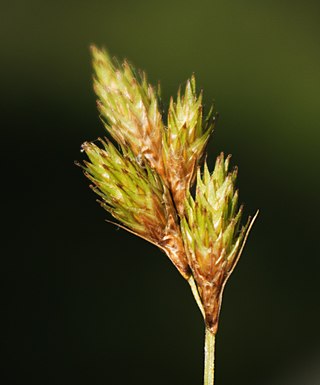
Carex scoparia is a species of sedge known by the common names broom sedge and pointed broom sedge. It should not be confused with the unrelated grass species known as "broom sedge," Andropogon virginicus.
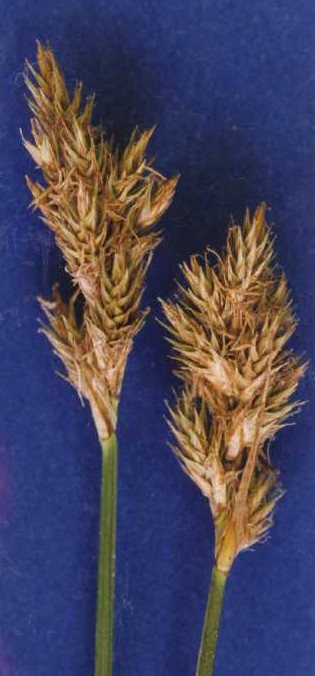
Carex specifica is a species of sedge known by the common name narrowfruit sedge.
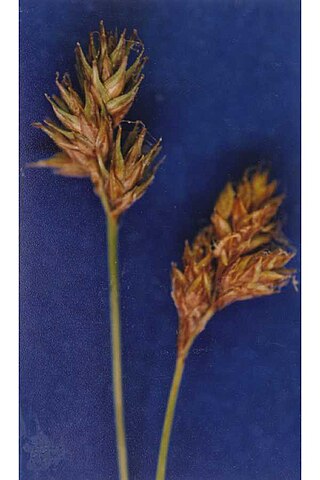
Carex straminiformis is a species of sedge known by the common name Shasta sedge.
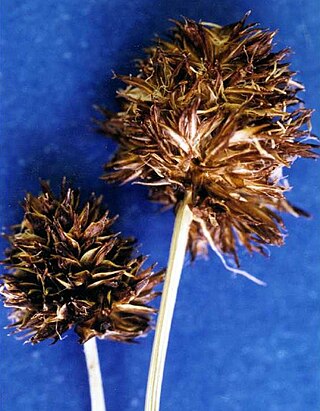
Carex vernacula is a species of sedge known by the common name native sedge.
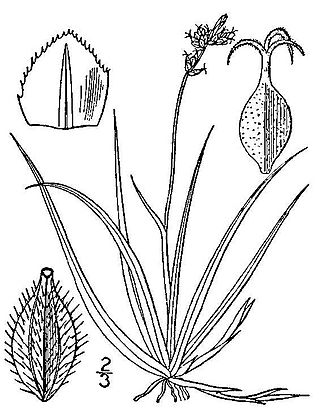
Carex concinna is a species of sedge known by the common names low northern sedge, northern elegant sedge, beauty sedge, and beautiful sedge. It is native to northern North America, where it occurs across Canada and in high elevations in the northern contiguous United States.

Carex brevior, known as shortbeak sedge and plains oval sedge, is a species of sedge native to North America. The specific epithet brevior means "shorter" in Latin.
This page is based on this
Wikipedia article Text is available under the
CC BY-SA 4.0 license; additional terms may apply.
Images, videos and audio are available under their respective licenses.



















